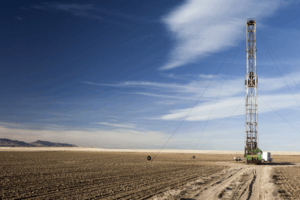OIL HOLDS FLAT AT $40
Overall, crude oil pricing has hovered near $40/bbl for the entire month of July. As we’ve discussed before, crude oil pricing will be tied closely to consumer activity and travel and therefor COVID-19 levels. Considering the continued confusion in the media and current concern over the impending school year, it’s best to expect pricing to stay where it is for a while. Jet fuel use in the US is still less than half of pre-virus levels even in the peak of summer travel season.
Further hurting crude oil’s outlook is Russia’s continued plans to increase output by 1.5 million barrels a day in August. For reference, the US has reduced output by just under 2 million barrels a day. Wall Street isn’t expecting any major drop in commodity pricing due to this, but worth watching.
This same trend has been reflected at the pump, with gasoline prices finally taking a nation-wide drop of 1 cent this week after a near-non-stop climb since April. Gasoline prices tend to follow crude oil trends so we should see gasoline prices stabilize around where they are now for at least the next month.

NATURAL GAS STILL EXPECTED TO START ITS WINTER CLIMB
On the other end of the spectrum, natural gas is still expected to take its yearly climb from $1.80 up to $2.80/mmbtu (per million btu) as the weather starts cooling off across the country. This rise isn’t anything out of the ordinary and is on par with the US average of under $3/mmbtu since 2009 (ever since the shale boom started).
Natural gas really hasn’t been affected by the quarantine and 2020 crisis, which is showing in the positive stock performance of the handful of operators in gas basins. Due to the difficulty in overseas transport and nature of use, natural gas prices are tied closer to weather and local supply rather than consumer activity. An early winter storm or disruptive hurricane is more likely to move the needle more than a virus.

OPERATOR BANKRUPTCY & ACQUISITION NEWS
The industry has only seen one large deal over $1 billion dollars with Chevron’s purchase of Noble Energy versus 7 by this time last year (and last year wasn’t exactly a banner year…). Generally a healthier or recovering market means more frequent and larger transactions.

We’ve also seen notable bankruptcies from companies such as Chesapeake Energy, Denbury Resources, Whiting Petroleum Company, and Unit Corporation. The filings have typically been Chapter 11, meaning the company is “restructuring” its debt (with a court to referee who gets what), rather than other types of filings that could end the company entirely. These will still be struggling companies after emerging from bankruptcy, but it’s not the end of the road.
What does bankruptcy mean for mineral owners? Wade Caldwell, President of the Texas NARO (National Association of Royalty Owners), has a list of questions on the Mineral Rights Forum that mineral owners should consider to determine the effect of a bankruptcy on their royalties.










